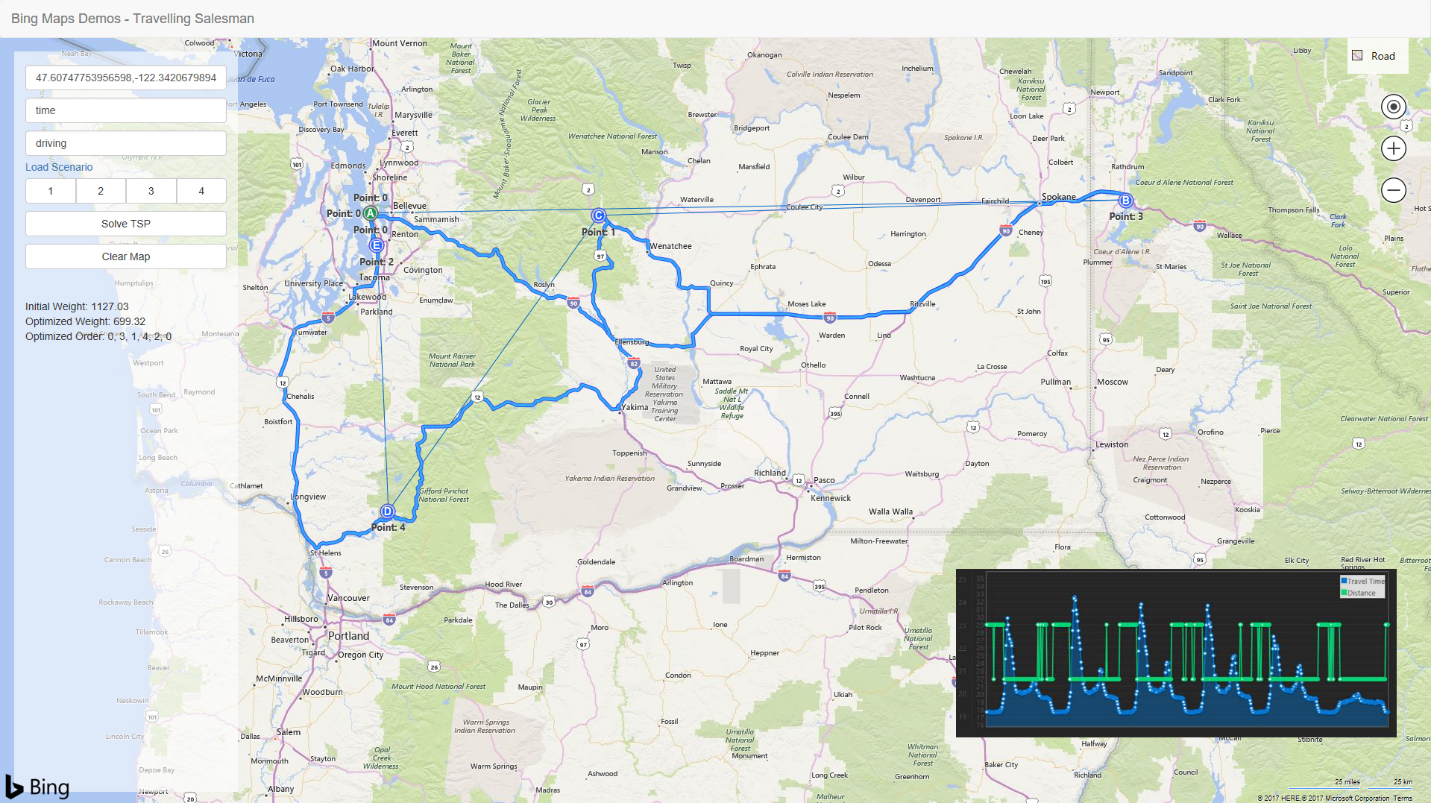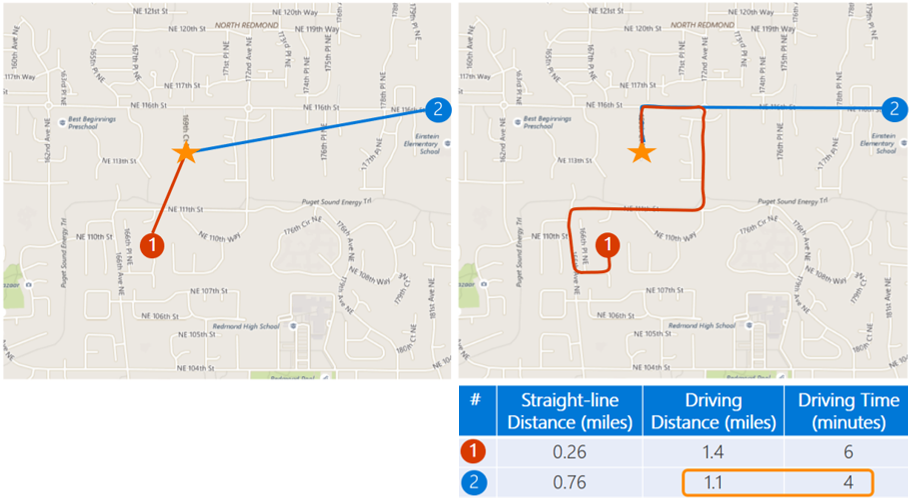At Microsoft Ignite we announced the Bing Maps Distance Matrix API solution, a service that provides travel time and distances for a set of origins and destinations. Today, we are happy to announce that it is now available!
Looking to develop a solution for a Travelling Salesman Problem (TSP) or Vehicle Routing Problem (VRP)? The Bing Maps Distance Matrix API service assists in calculating travel time and distances in many-to-many scenarios with an optional travel-time histogram. The Distance Matrix API can help answer questions as varied as where a commercial bakery should open their next location to optimize daily deliveries or helping a school district select the optimal pick up locations for their fleet of school buses.
How it works
The Bing Maps Distance Matrix API calculates the distances and times based on the routes calculated by the Bing Maps Route API. Times are based on predictive traffic information, depending on the start time specified in the request, and distance matrices are calculated using different modes of transportation, such as driving, walking and public transit routes. This API can also generate an optional histogram of travel times over a period of time with a set interval that takes into consideration the predicted traffic at those times.
Below is a screenshot from our travelling salesman demo, including the travel-time histogram:

Distance matrixes are used in several different types of applications. Some common applications include:
- Sorting search results by their actual travel distance or time.
- Determining arrival times based on travel times.
- Calculating the difference in commute times between locations. For example: We are looking to move to a new office, what is the impact on commute times for our staff?
Calculating a route with traffic data
Using the Bing Maps Distance Matrix API, you can calculate a route using traffic data to determine a distance matrix based on travel time or distance for many scenarios, such as store locators, job search sites, location scoring, and more.
In the first image below, location one is clearly closer than location two visually on a map; however, in calculating time and distance, the second location is actually a shorter distance away and takes less driving time than location one.

Get started
To learn more about developing your distance matrix solution, using the Bing Maps REST Service, view the API documentation. This documentation includes various scenarios in setting up your solution, how each option works, supported methods, how a request is calculated, and more. Coverage for Bing Maps Distance Matrix API is available in most places where Bing Maps supports routing. For details on coverage, please refer to the documentation.
Additionally, take a look at this project on GitHub, as it makes it easy to use the Distance Matrix API in .NET and also includes examples on how to use the Bing Maps Distance Matrix API.
For more information on the Bing Maps Distance Matrix API, how to get licensed, and frequently asked questions, visit our website.
We are always working to improve upon our APIs and look forward to seeing how people use the API and getting your feedback. Connect with us on the Bing Maps Forum to share your thoughts and let us know what you would like to see in future versions.
- Bing Maps team


















